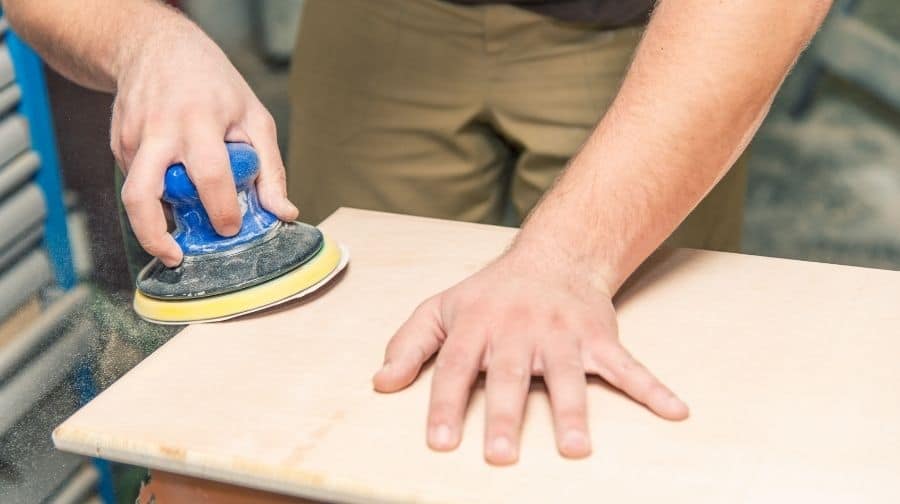
Do You Sand After Wood Conditioner?
No if you are using an oil based wood condition, but if you use a water based product it can cause the wood fibers to swell so you will need to lightly sand with a fine grit before staining. Make sure to always match your wood condition type (oil vs water based) with your stain type. Sanding is typically the process that comes after staining.
Let’s Understand The Complete Process Of Sanding:
Once you have used the wood conditioner, you have to wait for more than 15 minutes to let the conditioner dry. After that, you have to go through with the process of staining. In the process of staining, once the painting of the wood is over, you have to wait for more than 30 minutes to let the paint dry up completely.
Now, after the paint is completely dry. You have to do the sanding process. The sanding process can also be said as the final touch-up because sanding after the staining gives a unique type of smoothness and a decent finish of the colors applied on the wood. You have to use 120 – grit sandpaper once the paint is completely dry.
Consider reading our article on How To Prepare Wood For Stain at this link: https://topwoodworkingadvice.com/how-to-prepare-wood-for-stain/
Now Let’s Understand The Reason For Using Wood Conditioner Before Staining The Wood:
When cutting pieces of wood, you will feel that the wood is a little porous. So, to remove that porousness you have to use a wood conditioner which fills in the pores.
Staining can become one of the biggest problems in your project if your workpieces are not appropriately conditioned. And if you don’t use a wood conditioner and directly apply paint on the wood, then after a short period, you can easily notice stains getting inside your wood through the layer of the paint. So, it’s better to use a wood conditioner before painting so that it can easily prevent your wood from stains.
This was the comprehensive process of wood conditioning in brief. The perplexing detailing requires professionals with expertise. No wonder the process of wood sanding decides the quality of the outcome. Do not skip the process; otherwise, your work will lack precision. Nevertheless, wood conditioning is also an essential process before staining, and both of them ultimately secure the excellence of any final product.



